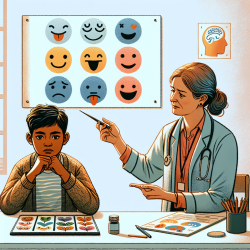As practitioners working with children, it's crucial to stay informed about the latest research to enhance our approaches and outcomes. A recent study titled The Association between Parent and Child-Report Measures of Alexithymia in Children with and without Developmental Language Disorder provides valuable insights into alexithymia—a personality construct involving difficulties in recognizing and expressing one's own emotions—particularly in children with Developmental Language Disorder (DLD).
This study, published in the International Journal of Environmental Research and Public Health, explored the agreement between parent and child reports of alexithymia and examined the relationship between alexithymia and communication difficulties. The findings have important implications for practitioners working with children with DLD.
Key Findings
- Children with DLD scored higher on parent-reported measures of alexithymia compared to their typically developing peers.
- There was no significant correlation between parent and child reports of alexithymia in either group.
- Pragmatic language abilities were significantly related to parent-reported alexithymia scores, especially in children with DLD.
- Structural language problems were not related to alexithymia scores in children with DLD.
Implications for Practice
These findings highlight the importance of considering both parent and child reports when assessing alexithymia. Here are some practical steps practitioners can take based on this research:
1. Use Multiple Sources of Information
Given the lack of agreement between parent and child reports, it is advisable to gather information from multiple sources, including teachers and therapists, to get a comprehensive understanding of a child's emotional and communication abilities.
2. Focus on Pragmatic Language Skills
The strong relationship between pragmatic language abilities and parent-reported alexithymia suggests that interventions should prioritize improving pragmatic language skills. This can help children better express their emotions and reduce alexithymic traits.
3. Tailor Interventions
Since children with DLD may have difficulties with emotional expression, interventions should be tailored to address these specific needs. Incorporating activities that enhance emotional awareness and expression can be beneficial.
4. Encourage Further Research
This study underscores the need for further research into non-verbal measures of alexithymia and the role of language skills in emotional development. Practitioners are encouraged to stay updated on emerging research and integrate new findings into their practice.
To read the original research paper, please follow this link: The Association between Parent and Child-Report Measures of Alexithymia in Children with and without Developmental Language Disorder.










